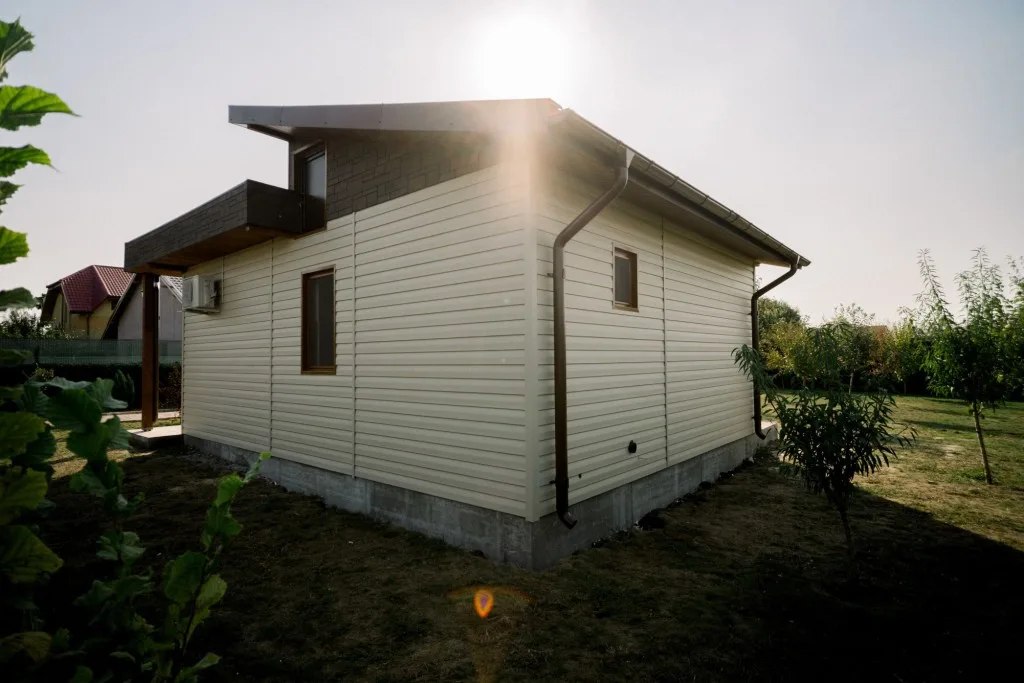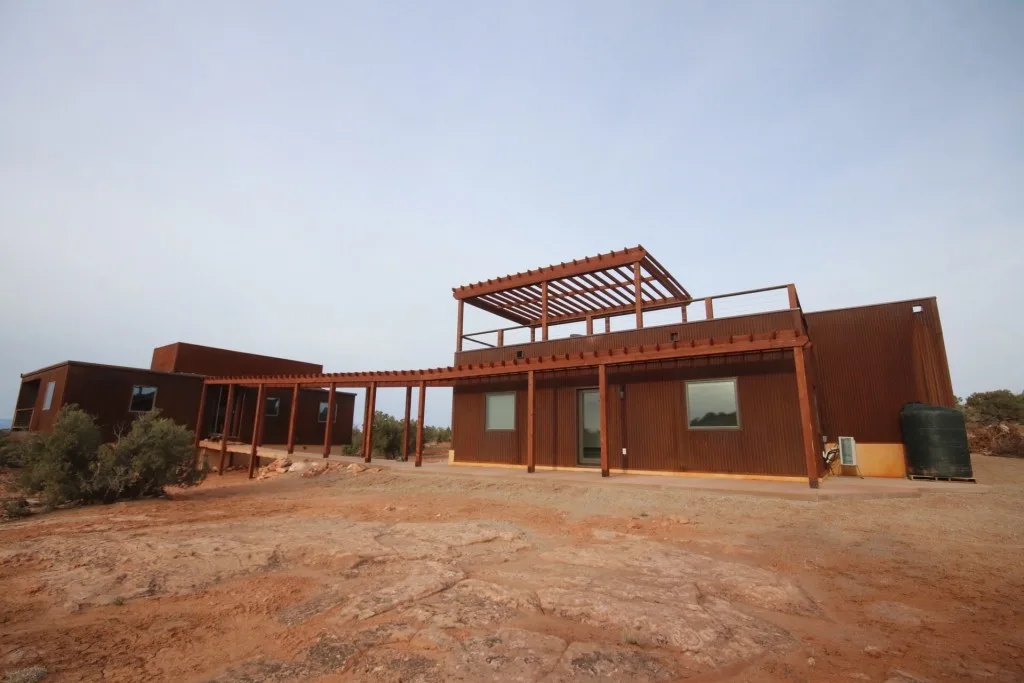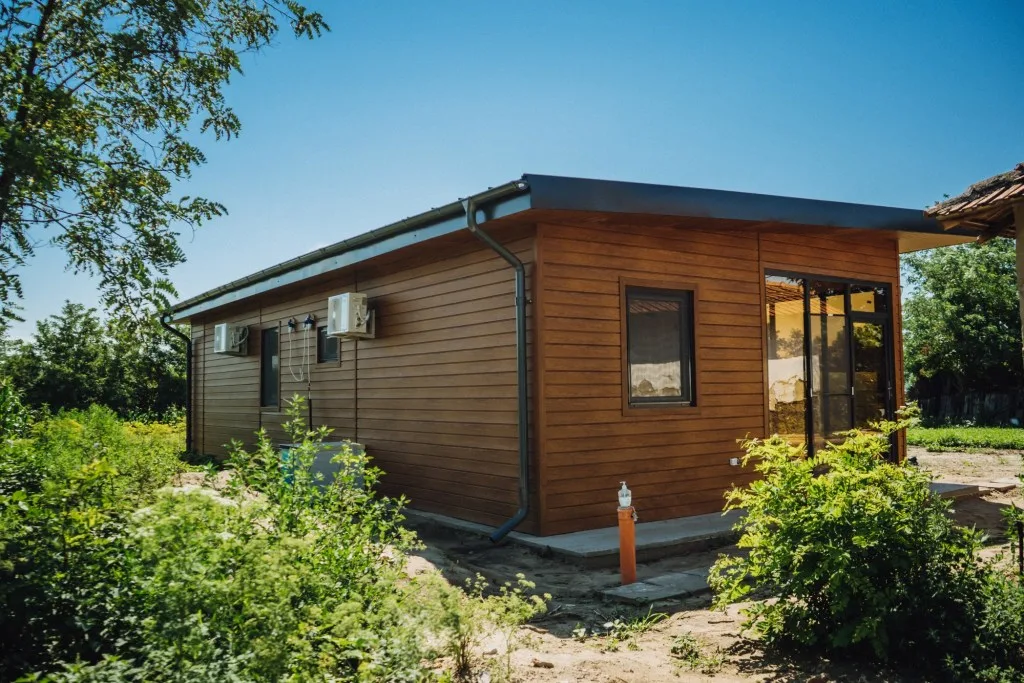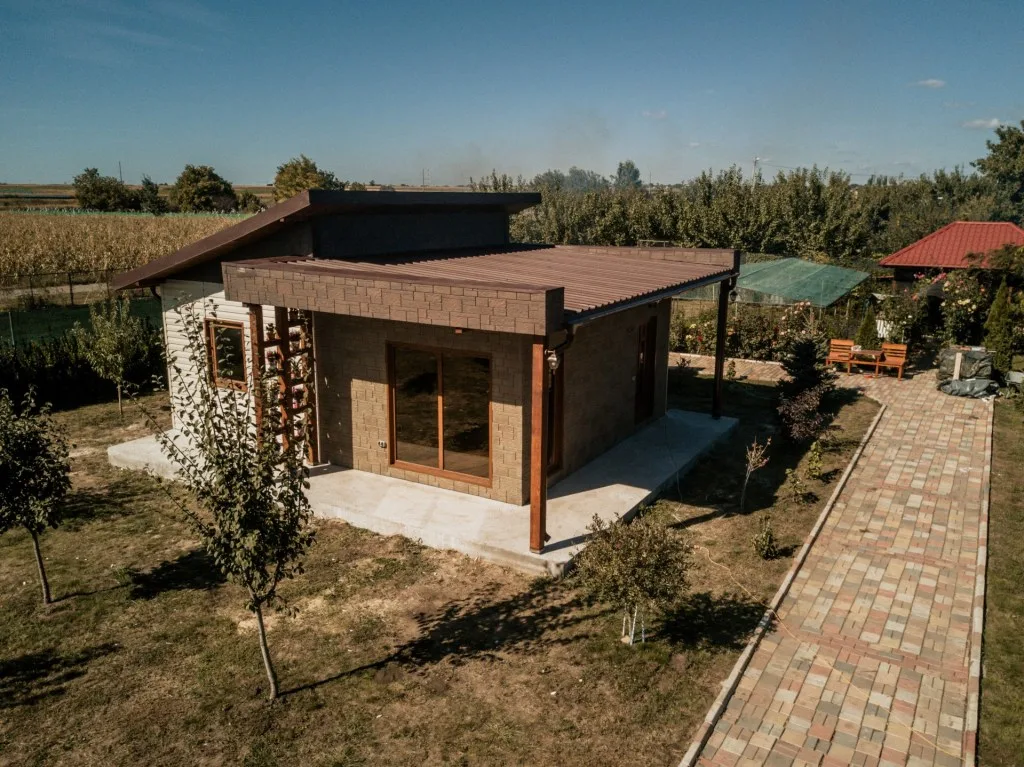One of the trendiest options in the tiny living movement is shipping container homes. Small living is certainly growing in popularity, and many people are looking for unique ways to express themselves.
Going green and making environmentally-friendly decisions has also become popular in recent years. And Naturalists have begun building their homes using recycled products to limit their impact on the earth.
However, while shipping container homes are good in theory, there’s an unfortunate truth that you might not have heard talked about all that often.
Let’s take a look!
What Is a Shipping Container Home?
A typical house uses wood and bricks to construct the walls and structure. However, a shipping container home is exactly what its name implies. It’s a shipping container modified to serve as a house.
Typically someone using a shipping container for their residence will require multiple shipping containers to get an adequate amount of livable space. There are positive and negative aspects of choosing these structures for a tiny home. However, they can be a great place to call home in certain circumstances.
Pro Tip: Like unique home options? Learn more about Camping in a School Bus, This RV Renovation Pushes the Limits.

What Are The Benefits of Shipping Container Homes?
There are several benefits to choosing a shipping container as your home. Let’s take a look at the positive side of this choice!
Sustainable Housing Option
The owner typically has a few options at the end of a shipping container’s life. The first option is to leave them to rust until they’re unusable. However, doing so can release toxins and other harmful pollutants bad for the environment. They also take up valuable space that could be used for a better purpose. This isn’t a good option and should be avoided as often as possible.
The second option is to melt them down at the end of their useful life to make new steel. However, recycling shipping containers requires much more energy than modifying them for housing. So that leaves us with our third option, using them for buildings.
Cheap to Purchase
You can snag a 20 or 40-foot used shipping container for approximately $2,000 to $4,500. The price will primarily be dependent on the age and condition of the container. However, size also would be a consideration when it comes to pricing. The larger the container, the more it will typically cost. For the size and flexibility of use, it’s hard to beat the price for shipping containers.
Customizable and Modular
When you use a shipping container to build your home, there’s typically only a couple of things limiting you, the laws of physics and your wallet. You can let your imagination run wild while designing your shipping container house. If you can imagine it and pay for it, there’s a good chance someone can help you turn it into reality.
Many people choose this lifestyle because they loathe the cookie-cutter homes found in many subdivisions and cities across the country. Having the ability to do something different and unique when building your home appeals to many people.
Pre-Fab Options Available
Don’t worry if you love the idea of using a shipping container for a home but may not have the time or skills to do it yourself. Some companies will do all of the work for you, and then you can assemble (or hire it out) at the location of your choice.
These are an excellent option because you get the expert craftsmanship of professionals. The manufacturers will often work with you to create the best layout and set up to maximize your experience in your tiny home.

The Unfortunate Truths of Shipping Container Homes
While there are some great uses and reasons for them as homes, there are some realities that many people overlook. Let’s take a look at a handful of the unfortunate truths when it comes to shipping container homes.
Most States Prohibit Living in Them
The rules and regulations regarding living in shipping containers can be quite a hurdle to jump over. Rules and regulations are typically set at the local level, making it incredibly confusing. You could live in a state and county that allow them, but a local town ordinance may prohibit it. A neighboring town may or may not be as strict and have no problem.
Before you get too far into the process, it’s wise to check with your local housing authorities to educate yourself on any rules or regulations. You don’t want to invest money into something that is potentially illegal.
Expensive to Convert to a Home
You can’t buy a container and expect to start moving in boxes and furniture. Converting a shipping container takes time and energy, but more importantly, money. You’ll need to completely overhaul the container to include everything you need in a house.
This will usually include running plumbing, electricity, and installing windows. The costs can add up quickly and get out of hand if you don’t keep an eye on it.
There is the option to buy a prefabricated unit where the company does all the work for you. It should come as no surprise that when you’re hiring professionals to do it all, you’re going to pay a premium price. So don’t get caught off guard if you ask for an estimate from a professional conversion company.
Tiny Living Space
It’s easy to see images of tiny homes and be envious of the minimalistic and straightforward approach. However, living in a small space can be challenging, especially if you have a significant other or children. Tiny living may help you realize how much you appreciate the ability to spread out or even have some alone time.
Tiny living typically requires you to minimize your belongings and develop creative storage solutions. While you’ll be living in a storage container, when you factor in all of the space for the necessities, storage is typically lower on the list of priorities.

Could Be a Toxic Living Environment
Shipping containers are often treated with large amounts of pesticides, layers of paint, and other chemicals that could be hazardous. While you can put a tremendous amount of effort into cleaning a used storage unit, there’s no guarantee that you’ll be able to eliminate all of these chemicals.
These chemicals could turn your shipping container into a death trap. Breathing in toxic chemicals over extended periods is never good. It can create or magnify health conditions in you and your loved ones. It doesn’t matter how budget-friendly these homes are; the safety of you and your loved ones is worth more.
Require Structural Reinforcements
Shipping containers can carry large amounts of weight because of their design. They will often carry the bulk of their weight on the corners, which are the strongest parts of a container. However, you’re altering their integrity whenever you make modifications.
You’ll need to install structural reinforcements when you cut into or remove sections of the container. Doing so may require an engineer or professional assistance, especially if you’re dealing with strict building codes.
Rust Is Common
One of the biggest enemies of metal is rust. Rust will eat away at a metal shipping container like a termite on a log cabin. This is especially true if you live in a rather wet environment. A lack of ventilation will also accelerate rust attacking a shipping container.
If you choose to live in a storage container, you’ll need to be vigilant against protecting your home from rust. Don’t skip or delay maintenance, or you could find yourself in a rusty situation.
Pro Tip: Just like there are pros and cons to shipping container homes, these are The Pros and Cons of RV Class Types.

Where Can You Buy Shipping Containers?
A quick internet search will produce a tremendous amount of companies selling shipping containers all over the country. While a used container is typically cheaper, there are some instances where you’d want to buy a new shipping container, especially if you’re considering making it your home.
When you buy a shipping container, you’ll most likely need it delivered to you. So make sure you factor this added expense into your costs while you’re shopping. These massive containers may be empty, but you’re likely going to need a semi-truck to transport them.
Do Shipping Container Homes Hold Value?
Shipping container homes typically do retain their value for many years. Depending on the housing market for the area, you’re likely to experience them increasing in value. They’re attractive to buyers because you can deliver practically anywhere.
Like an RV, you can typically load up a shipping container home and transport it to the new owner. This is an excellent option if you only want to sell the house and not the land.
How Long Do Shipping Container Homes Last?
The lifespan of a shipping container home is typically 15 to 30 years. However, this can vary greatly depending on the container’s initial quality and where the container home resides.
If a container home is in an environment with frequent harsh conditions, such as heat, cold, and rain, there’s a good chance it will experience a shorter lifespan. Regular maintenance can help increase the lifespan, but shipping containers won’t last forever.
Are Shipping Container Homes a Good Investment?
While shipping container homes may be trendy and eye-catching, they’re not practical investments. The lifespan of a storage container is much shorter than that of a typical home. Like most trends, they run their course. So eventually, when this trend is no longer trending, the allure of shipping container homes will be gone. The attraction is what gives these homes their value.
A container home could be a good investment if you live in an area where you could rent it out. This is a great way to not only pay off any expenses incurred during construction but potentially make a bit of profit as well. Would you consider a shipping container for a home?
Discover the Best Free Camping Across the USA
To be honest with you, we hate paying for camping. There are so many free campsites in America (with complete privacy).
You should give it a try!
As a matter of fact, these free campsites are yours. Every time you pay federal taxes, you’re contributing to these lands.
Become a FREE CAMPING INSIDER and join the 100,000 campers who love to score the best site!
We’ll send you the 50 Best Free Campsites in the USA (one per state). Access the list by submitting your email below:
[…] of the main advantages of container homes is their affordability. According to a search result from Drivin Vibin, used shipping containers can be purchased for as little as $2,000 to $4,500. However, the cost of […]